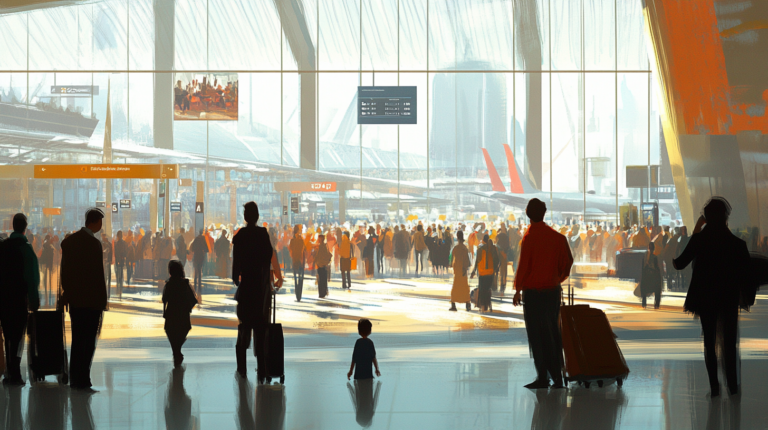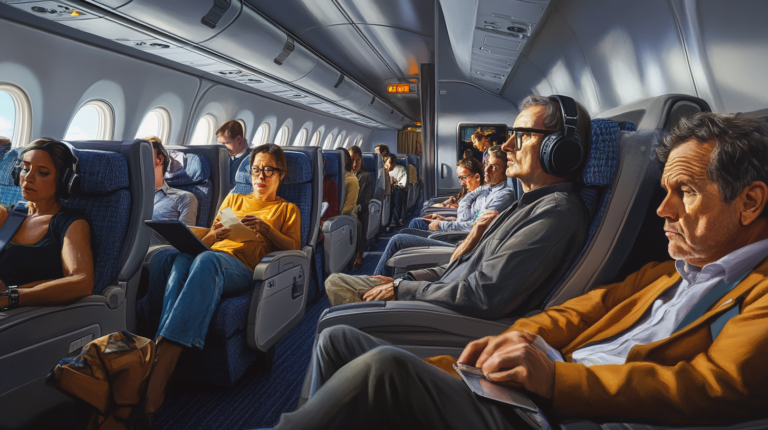How Far Is Toronto from Niagara Falls? A Comprehensive Guide
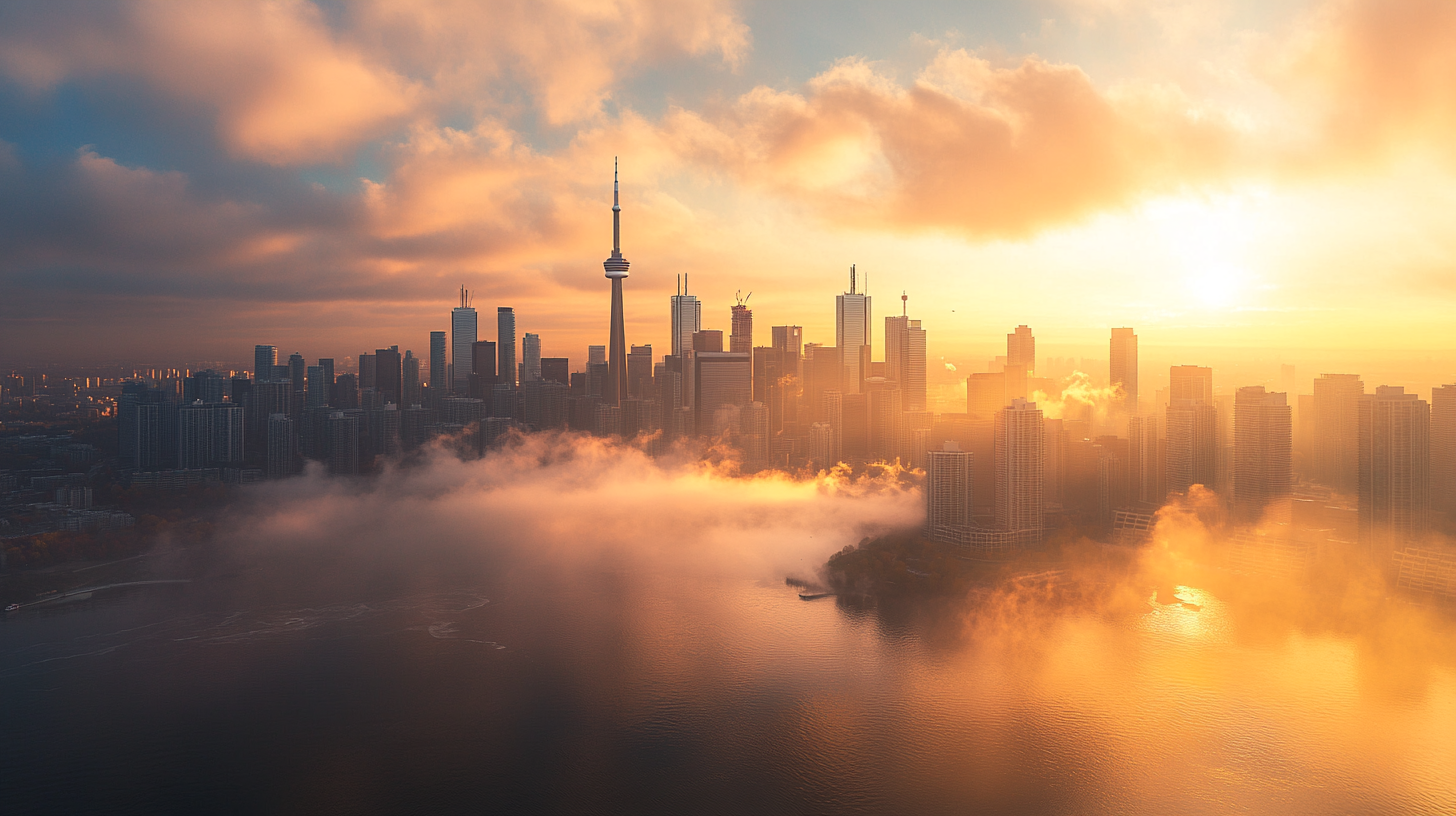
Imagine standing at the edge of a thundering waterfall, mist rising like a veil as millions of gallons of water cascade before your eyes. This captivating experience awaits just a short journey from Toronto to Niagara Falls, two iconic destinations in Ontario, Canada. For travelers and locals alike, the allure of witnessing the majestic falls up close is irresistible. Whether you’re envisioning a spontaneous day trip or meticulously planning a holiday, understanding the distance and the myriad of travel options available is the first step to an unforgettable adventure. This comprehensive guide delves into how far Toronto is from Niagara Falls, explores the best ways to travel between them, and highlights the wonders that await along the way.
Distance Between Toronto and Niagara Falls
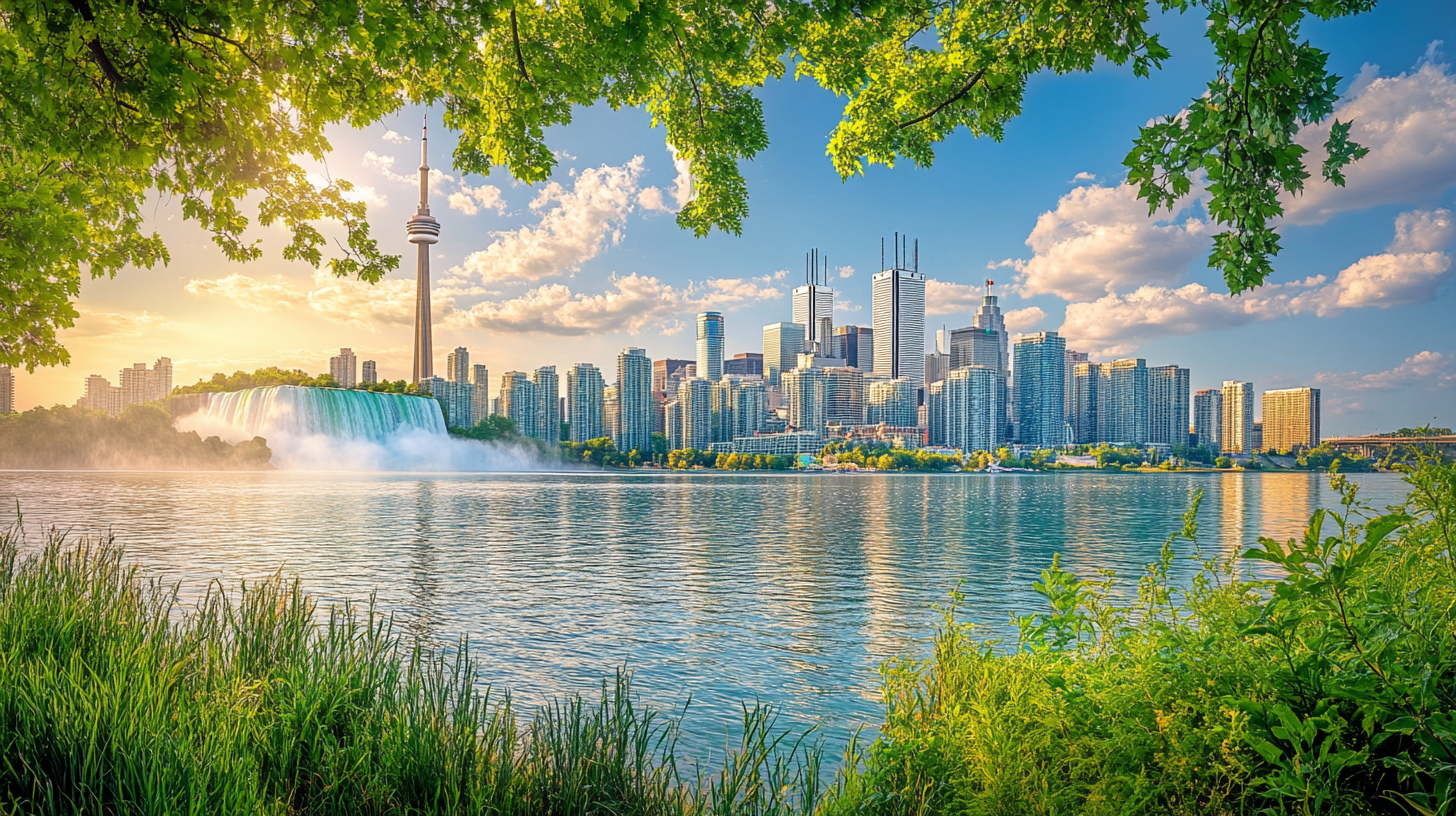
The distance between Toronto and Niagara Falls isn’t just a number—it’s a gateway to a journey filled with scenic landscapes and charming towns. The measurement varies based on the mode of transportation chosen, as well as the routes available. Below are the key distances to consider when planning your trip:
- Straight-Line Distance: The straight-line distance, or “as the crow flies,” between Toronto and Niagara Falls is approximately 72 km (45 miles). This represents the shortest path between the two points, disregarding any obstacles or roads.
- Driving Distance: When traveling by car, the distance increases due to the road network, amounting to approximately 130 km (80 miles), depending on the exact starting point and route. The most common route is along the Queen Elizabeth Way (QEW), which hugs the shoreline of Lake Ontario.
- Flying Distance: For those considering air travel, the flight distance is slightly shorter at around 67 km (42 miles), taking the most direct aerial path.
The difference between the various distances is primarily due to the natural curvature of the Earth’s surface and the layout of the transportation infrastructure. Roads often weave around natural barriers, urban developments, and follow the contours of the landscape, which adds to the total distance traveled. Understanding these distances is crucial in selecting the most suitable mode of transportation for your needs.
For a detailed map and route options, consider checking comprehensive travel route planner from Toronto to Niagara Falls to optimize your journey.
Travel Times from Toronto to Niagara Falls
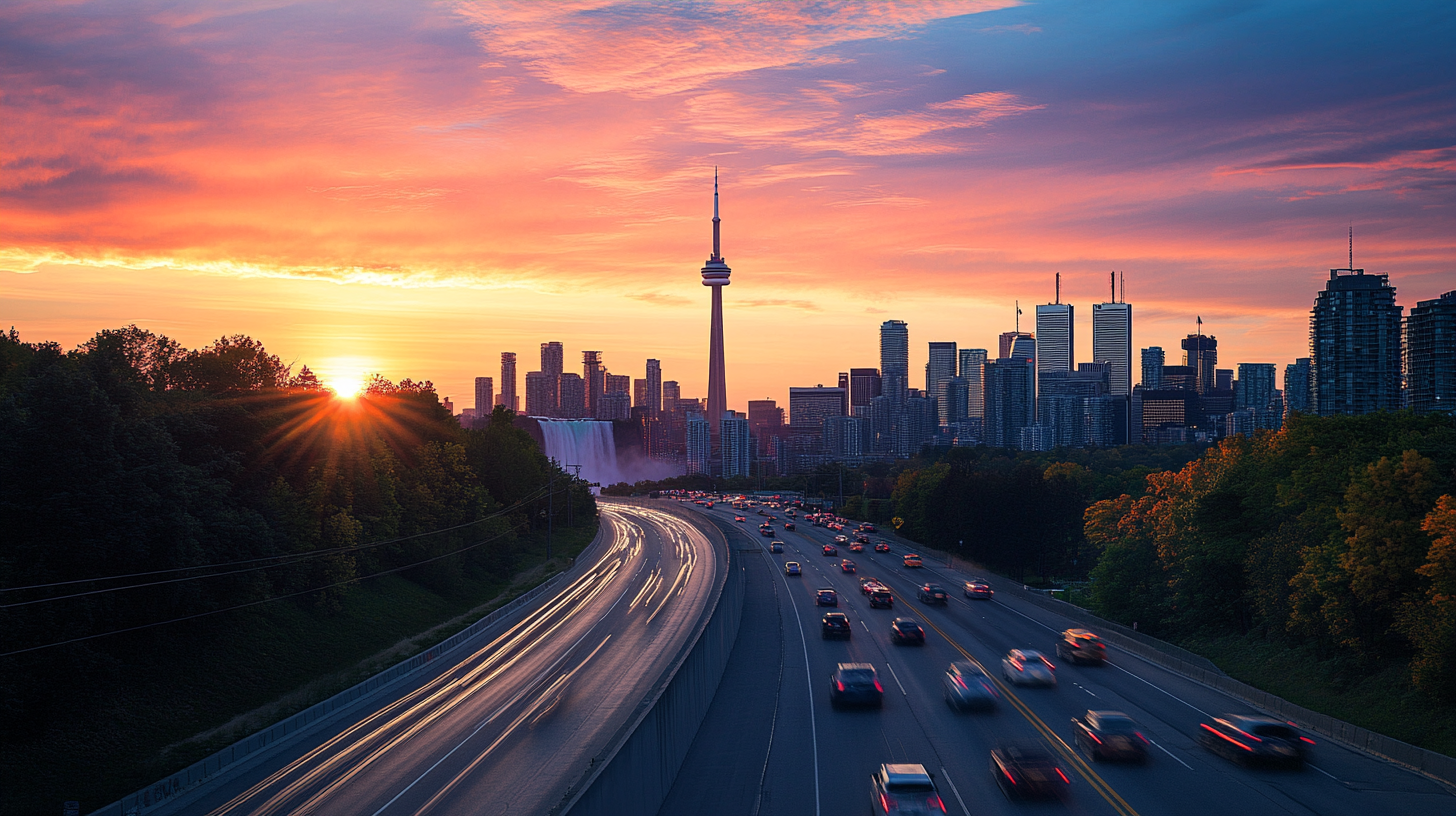
The duration of your journey from Toronto to Niagara Falls can vary significantly based on the transportation method, time of day, and even the day of the week. Here is what you can expect:
- By Car: Driving typically takes about 1.5 hours when traffic conditions are favorable. During peak hours or weekends, travel time can extend due to congestion along the QEW Highway. If driving at an average speed of 100 km/h (62 mph), you can expect the journey to take approximately 1 hour and 30 minutes.
- By Bus: Bus services offer economical options with travel times of about 2 hours, yet this can vary based on the number of stops and traffic conditions. Some express services may reduce travel time.
- By Train: Train journeys can take between 1.5 to 2.5 hours, offering a scenic and relaxing trip that avoids road traffic altogether.
- By Air: A helicopter flight offers the fastest option, taking approximately 12 to 15 minutes, providing not only quick transport but also a breathtaking aerial tour.
For instance, if you depart Toronto by car on a Friday afternoon, you might encounter increased traffic due to weekend travelers, potentially adding 30 minutes or more to your trip. Alternatively, taking an early morning train can not only save time but also allow you to enjoy sunrise views over the countryside.
To stay updated on current traffic conditions and travel advisories, consult real-time travel updates between Toronto and Niagara Falls before your departure.
Modes of Transportation
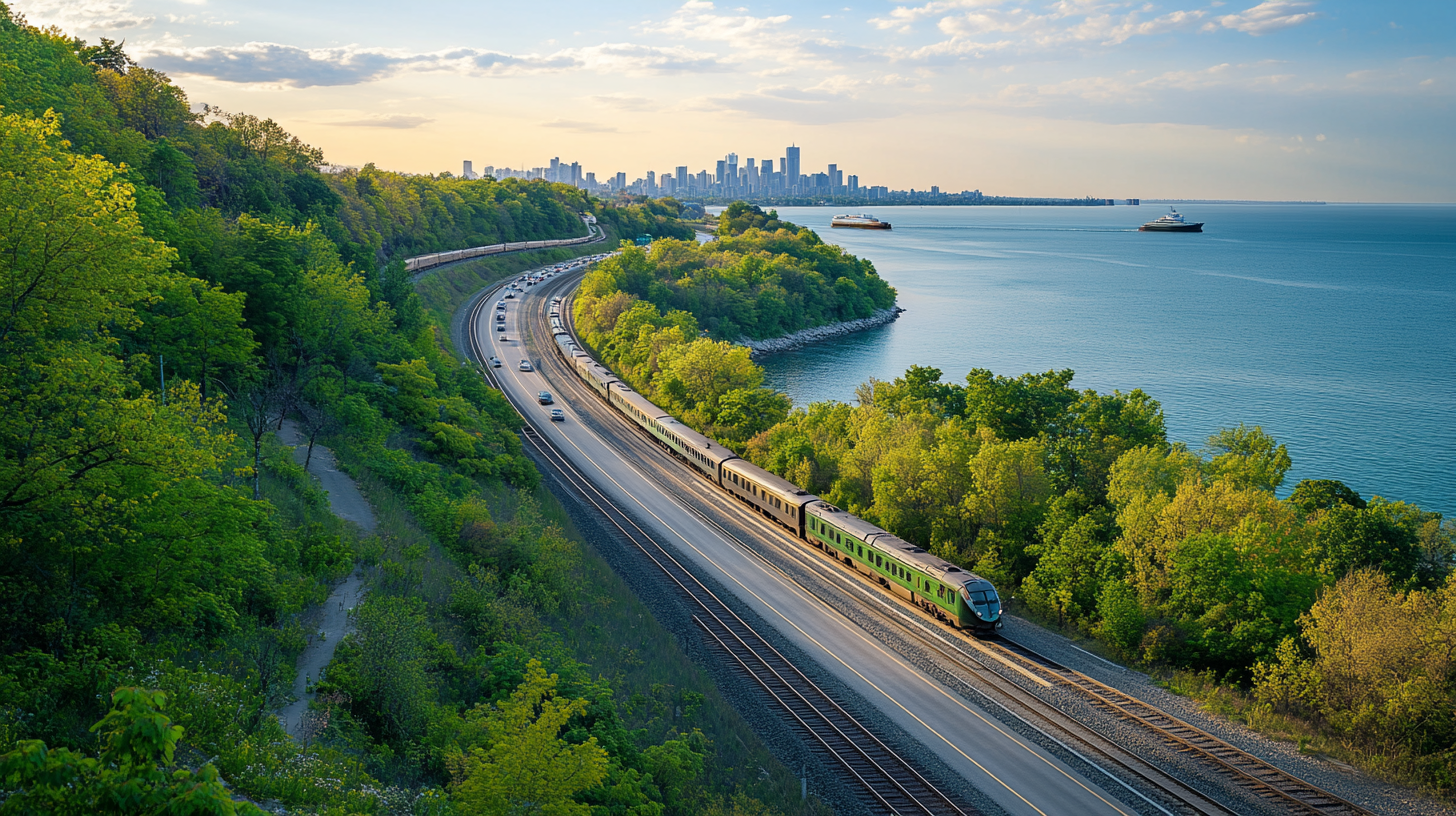
Driving by Car
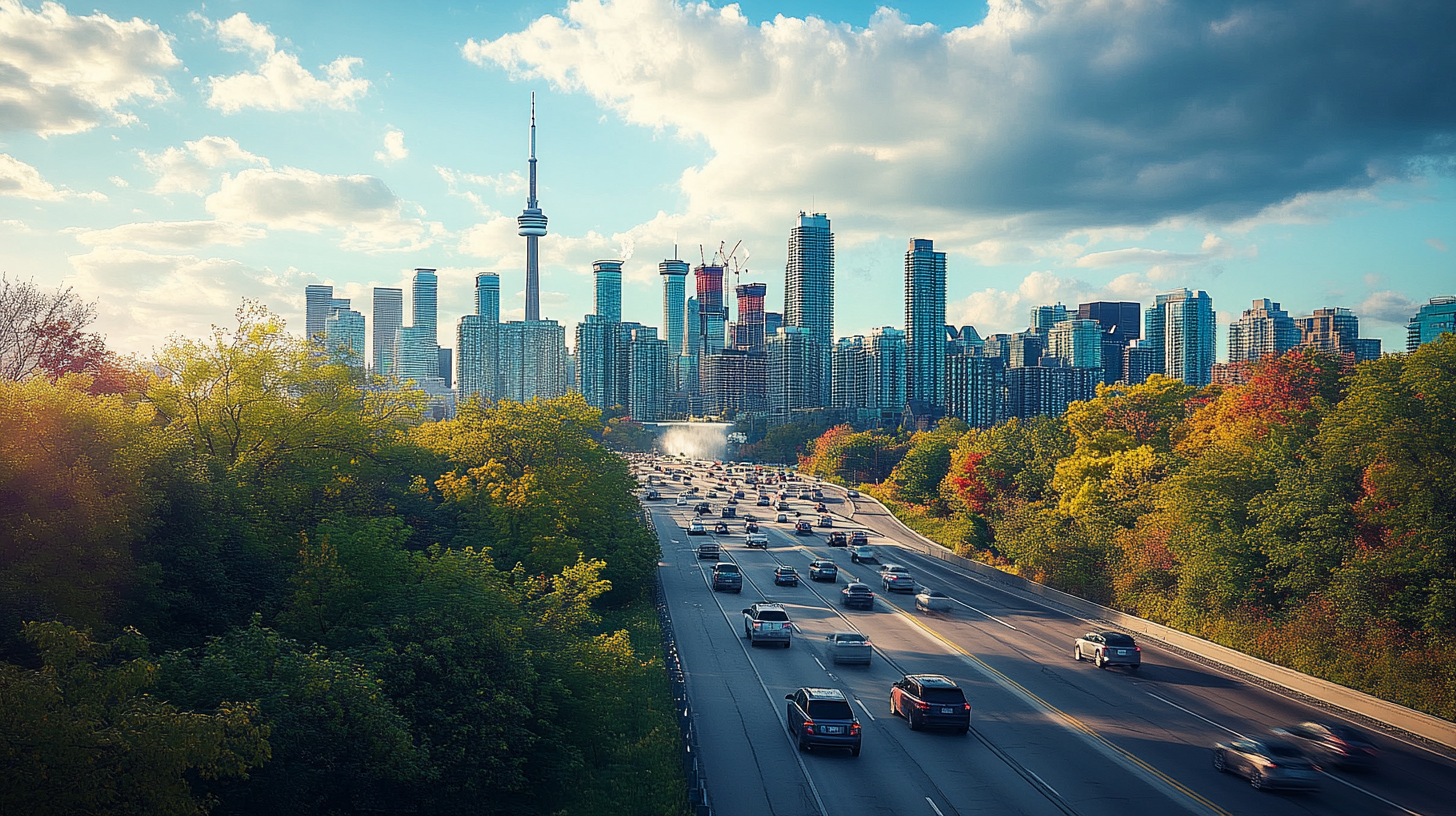
Embarking on a road trip from Toronto to Niagara Falls by car allows you to chart your own adventure. The primary route, the Queen Elizabeth Way (QEW), is a well-maintained highway that traces the northern shore of Lake Ontario before turning inland toward the Niagara Peninsula. Along the way, you can savor the changing landscapes—from the urban skyline of Toronto to the picturesque vineyards and orchards that characterize the Niagara region.
Benefits of driving include:
- Setting your own pace and departure time, giving you the freedom to start early or take a leisurely drive.
- Ability to make stops at various attractions en route, such as the historic town of Oakville, the serene beaches of Burlington, or the charming village of Jordan Station.
- Convenience of carrying luggage and personal items without restrictions typical of public transportation.
- Opportunity to explore off-the-beaten-path destinations, like the Royal Botanical Gardens or the Ball’s Falls Conservation Area.
Before hitting the road, consider consulting comprehensive driving guide from Toronto to Niagara Falls for tips on the best routes, rest stops, and attractions along the way.
By Bus
Opting for bus travel allows you to relax and let someone else handle the driving. Bus companies such as Megabus, FlixBus, Greyhound, and Ontario Northland provide frequent services between the two cities. Buses depart from various locations in Toronto, including the bustling Union Station Bus Terminal, and arrive at the bus terminal in Niagara Falls, often within walking distance or a short cab ride from major attractions.
Considerations for bus travel:
- Economical choice for budget-conscious travelers, with tickets often priced lower than other modes of public transportation.
- The bus station in Niagara Falls is located approximately four kilometers from the falls, so additional transportation such as a taxi, shuttle, or local bus may be needed upon arrival.
- Offers a stress-free journey without the need to navigate traffic, allowing you to use the time to read, rest, or enjoy the scenery.
- Some buses offer amenities such as Wi-Fi and power outlets, enhancing your travel experience.
To compare schedules and ticket prices, check out bus transportation options between Toronto and Niagara Falls to find the best fit for your itinerary.
By Train

The train journey from Toronto to Niagara Falls offers a comfortable and picturesque alternative to road travel. Services like VIA Rail and the GO Train depart from Toronto’s historic Union Station, taking about 1.5 to 2.5 hours to reach Niagara Falls. Passengers can enjoy amenities such as spacious seating, onboard Wi-Fi, and snack services. The route often follows the shoreline, providing views of Lake Ontario and passing through quaint towns.
Advantages of train travel:
- Comfortable seating and amenities on board, making for a pleasant journey.
- Opportunity to enjoy the landscape without the responsibilities of driving, allowing you to read, work, or simply relax.
- Direct routes are available for added convenience, with some trains running express services during peak seasons.
- Environmentally friendly option, reducing your carbon footprint compared to individual car travel.
For the latest train schedules and ticket information, visit train services from Toronto to Niagara Falls to plan your trip accordingly.
Tours and Shuttles
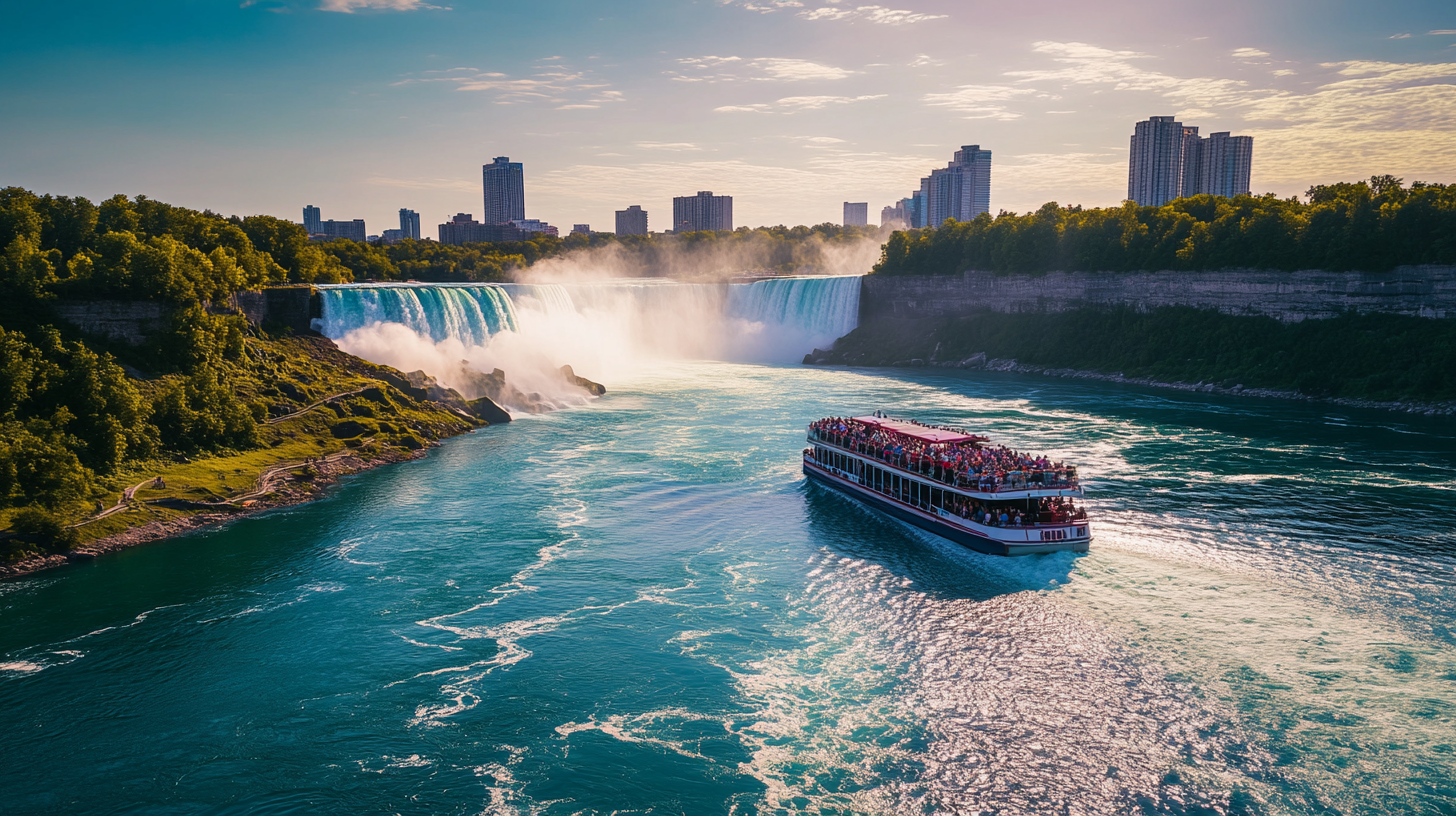
Joining a guided tour or shuttle service combines transportation with curated experiences. Many tour operators offer packages that not only transport you to Niagara Falls but also provide narrated guides, priority access to attractions, and visits to surrounding points of interest. These tours can range from half-day excursions to multi-day adventures.
Benefits of tours and shuttles:
- Comprehensive itineraries that maximize your experience, ensuring you don’t miss any highlights.
- Knowledgeable guides providing insights into the area’s history, culture, and hidden gems.
- Elimination of transportation planning and navigation concerns, with door-to-door service from your hotel or a central location.
- Opportunities to meet other travelers and share the experience in a group setting.
To explore available options, browse guided tour packages from Toronto to Niagara Falls and choose a tour that matches your interests.
By Air

A helicopter flight from Toronto to Niagara Falls transforms your journey into a thrilling adventure. As you soar above the cityscape and countryside, you’ll witness panoramic views that are simply unattainable from the ground. Flights take approximately 12 to 15 minutes and offer stunning aerial views of the region. Some operators also offer charter flights that can be tailored to include additional aerial sightseeing over the falls and surrounding landmarks.
Points to consider:
- Higher cost compared to other transportation methods, reflecting the exclusivity and experience of the flight.
- An unforgettable experience ideal for special occasions such as anniversaries, proposals, or as a highlight of your trip.
- Limited luggage capacity due to aircraft size restrictions, so packing light is essential.
- Flights are subject to weather conditions, and it’s advisable to have flexible plans in case of rescheduling.
For booking details and availability, consult helicopter flight services from Toronto to Niagara Falls to arrange this extraordinary journey.
Attractions and Activities at Niagara Falls

Upon arrival at Niagara Falls, a world of breathtaking sights and exciting activities awaits. The city is not just about the falls themselves but also offers a rich tapestry of attractions that cater to all ages and interests. Here are some must-see attractions and activities to consider:
- Horseshoe Falls: The most iconic of the three waterfalls, best viewed from the Canadian side. Experience the sheer power and beauty from observation decks, or venture closer via walkways that edge the falls.
- Hornblower Boat Tour: Get up close to the falls on this exhilarating boat ride. Feel the mist on your face as you approach the base of the falls, an experience that is both humbling and thrilling.
- Skylon Tower: Offers panoramic views of the falls and surrounding area from its observation deck, 775 feet above the gorge. Dine in the revolving restaurant for an unforgettable meal with a view.
- Niagara-on-the-Lake: A picturesque town renowned for its wineries, theaters, and historic sites. Stroll through charming streets lined with boutique shops and heritage architecture.
- Journey Behind the Falls: Descend into tunnels that lead you behind the curtain of water, offering a unique perspective of the falls’ power.
- White Water Walk: Explore a boardwalk along the edge of the Niagara River’s class 6 white-water rapids, providing an up-close look at the surging waters.
- Clifton Hill: Known as the “Street of Fun,” featuring attractions like the Niagara SkyWheel, Ripley’s Believe It or Not, and numerous entertainment venues.
- Butterfly Conservatory: Walk among thousands of free-flying butterflies in a lush, tropical environment.
- Museums and Wineries: Explore local culture and history at museums, or indulge in wine tasting tours at world-class wineries in the Niagara region.
For a detailed guide on what to do and see, refer to comprehensive list of attractions in Niagara Falls to plan your itinerary.
Best Time to Visit
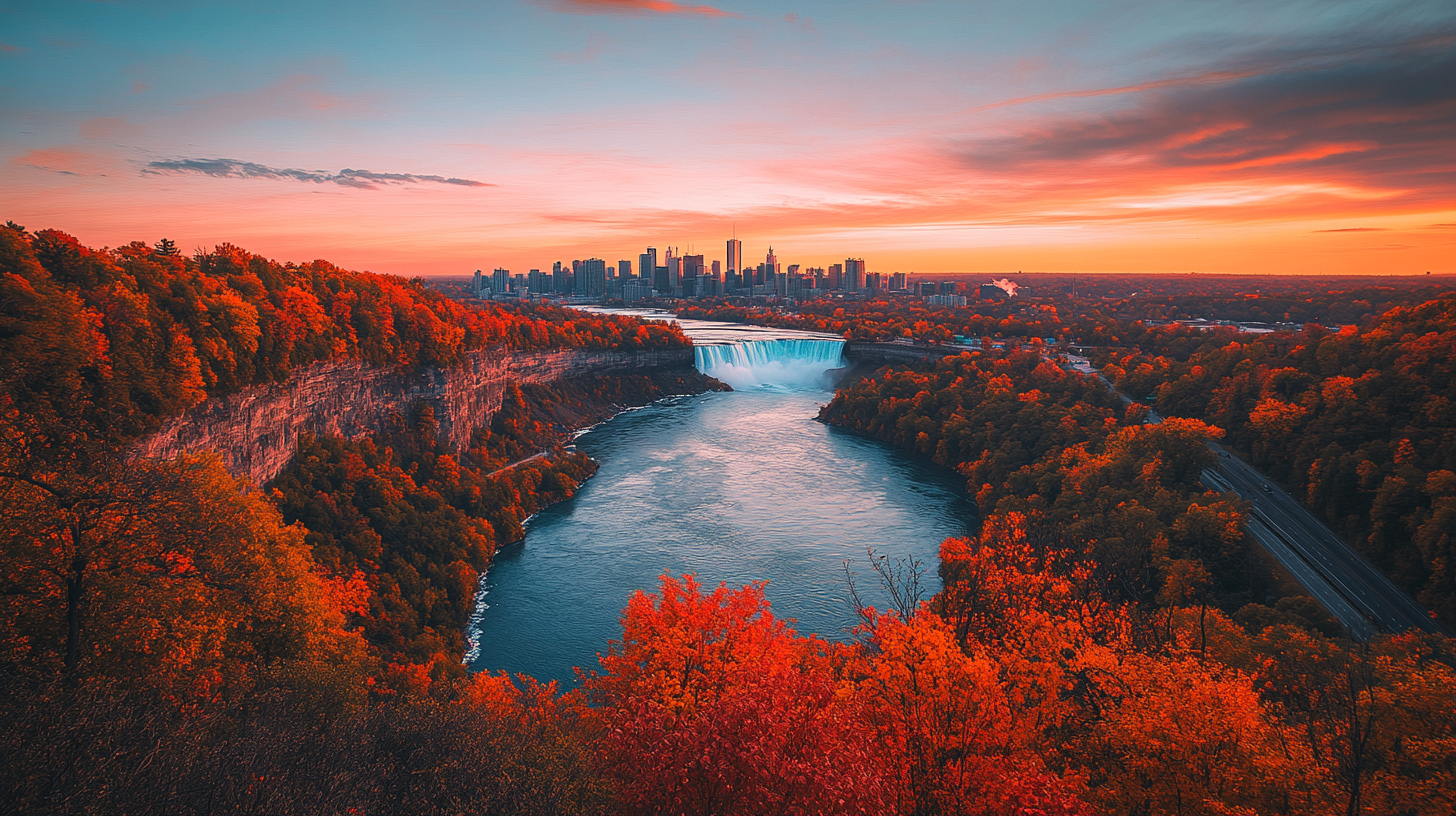
While Niagara Falls is a year-round destination, each season offers a unique atmosphere and different experiences. Choosing the best time to visit depends on what you hope to see and do during your stay.
- Spring (March to May): Ideal for travelers seeking a quieter visit with fewer crowds and milder weather conditions. The landscape comes alive with blooming flowers, and the falls’ flow is strong due to melting snow upstream.
- Summer (June to August): The peak tourist season with warm weather and full access to attractions. Extended daylight hours allow for more sightseeing, and you can enjoy events like the Niagara Falls Fireworks and Illumination series. Be prepared for larger crowds and higher accommodation rates.
- Fall (September to November): Witness the breathtaking fall foliage as leaves change to vibrant reds, oranges, and yellows. Cooler temperatures make outdoor activities comfortable, and it’s a great time for winery tours during the grape harvest.
- Winter (December to February): Offers a unique perspective with the potential of viewing the falls partly frozen, creating a magical winter scene. Festivities such as the Winter Festival of Lights light up the season. Some attractions may have limited hours or be closed, but indoor activities and the natural beauty make it worthwhile.
For information on seasonal events and weather forecasts, check seasonal guide to visiting Niagara Falls to time your trip perfectly.
Tips for Travelers

To make the most of your trip from Toronto to Niagara Falls, consider the following tips that can enhance your experience:
- Plan Ahead: Reservations for transportation and accommodations can ensure a smooth experience, especially during peak seasons when demand is high. Booking in advance can also secure better rates and availability.
- Check Schedules: Verify the latest bus and train schedules as they can vary, particularly on weekends and holidays. Service frequencies may be reduced on certain days.
- Explore En Route: If driving, take advantage of the opportunity to visit charming towns, local markets, and natural attractions along the way. This can enrich your journey and provide memorable experiences beyond the main destination.
- Dress Appropriately: Wear comfortable footwear for walking and consider waterproof clothing to handle the mist from the falls, especially if you plan to get close to the water. Layered clothing is advisable to adapt to changing weather conditions.
- Budget Wisely: Compare costs of different transportation modes, accommodation options, and activities to find the best fit for your budget. Look out for package deals or discounts for attractions.
- Stay Hydrated and Nourished: Carry water and snacks, particularly during the warmer months or if you plan extensive walking tours.
- Respect Local Guidelines: Be mindful of any regulations or advisories, such as park rules, photography restrictions, or safety notices near the falls and other natural areas.
- Capture the Moment: Don’t forget your camera to capture the stunning scenery, but also take time to unplug and simply enjoy the view.
For more travel advice, including recommended packing lists and insider tips, visit comprehensive travel tips for visiting Niagara Falls to be well-prepared.
Final Thoughts
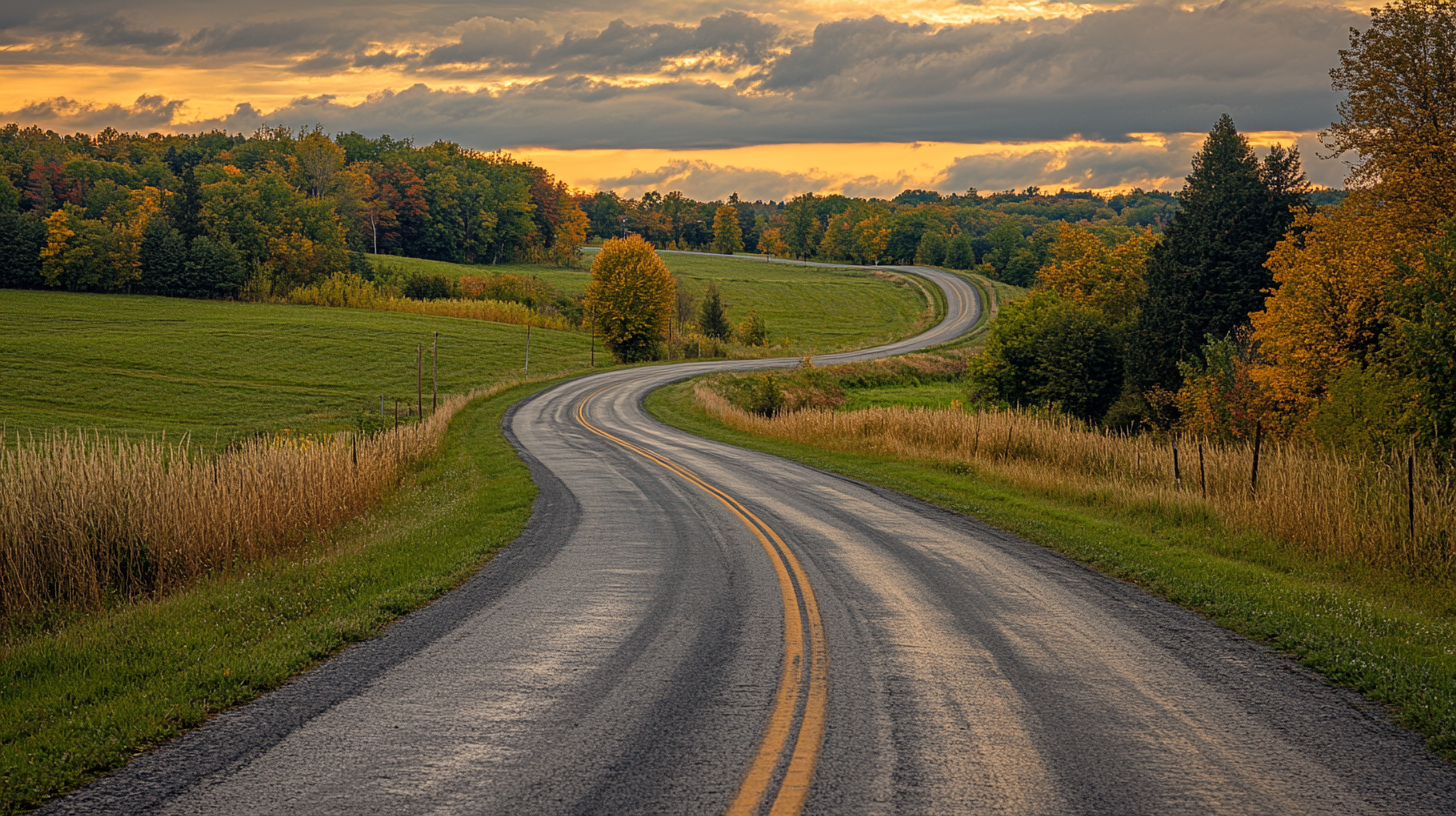
The journey from Toronto to Niagara Falls is not just a trip between two cities but an exploration of some of the most captivating sights and experiences that Canada has to offer. With a distance of around 130 km (80 miles), it’s an accessible adventure that beckons to solo travelers, couples, families, and friends alike. By understanding the distances, travel times, and transportation options, you can tailor your journey to suit your preferences and make the most of every moment.
Whether you choose the independence of driving, the convenience of public transport, or the luxury of a guided tour, each route offers its own unique perspectives and opportunities. As you stand before the thundering falls, feel the mist on your face, and witness the sheer power of nature, you’ll understand why this destination captures the hearts of millions.
Prepare for an unforgettable experience as you immerse yourself in the natural beauty, attractions, and welcoming communities that make the region truly special. The memories you create on your journey from Toronto to Niagara Falls will last a lifetime, marking the beginning of countless stories to share.
Follow us back to Seat 5A for more travel inspiration and tips. We look forward to being part of your next adventure!
This blog post was AI-written / human assisted.


